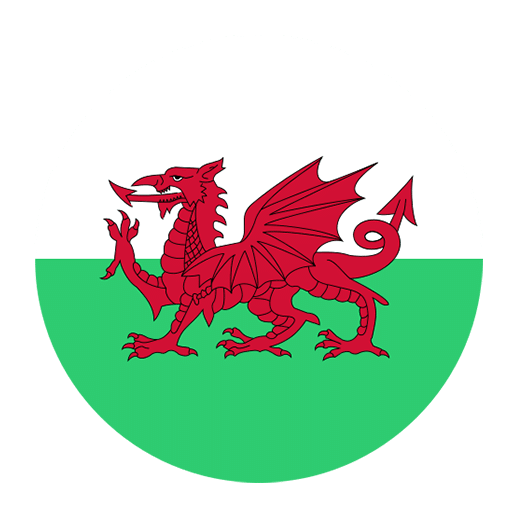Learning a new language is a journey filled with the discovery of new words, structures, and cultural insights. Welsh, or “Cymraeg” as it is known in its native form, is a Celtic language spoken predominantly in Wales. One of the most delightful aspects of learning Welsh is the ability to describe the beautiful and varied landscapes of Wales in the native tongue. Whether you are hiking through the mountains of Snowdonia, strolling along the picturesque coastline, or exploring the lush valleys, knowing how to describe these scenes in Welsh can greatly enrich your experience and conversation.
Basic Vocabulary for Scenery and Landscapes
Before diving into more complex sentences and descriptions, it is essential to get acquainted with the basic vocabulary related to scenery and landscapes. Here are some fundamental Welsh words that will come in handy:
– Mountain: mynydd
– Valley: cwm
– River: afon
– Lake: llyn
– Sea: môr
– Beach: traeth
– Forest: coedwig
– Hill: bryn
– Field: maes
– Cliff: creigiau
– Waterfall: rhaeadr
Descriptive Adjectives
Adjectives are crucial for bringing your descriptions to life. Here are some useful adjectives to describe landscapes in Welsh:
– Beautiful: prydferth
– Serene: heddychlon
– Picturesque: tirlunio
– Majestic: mawrhydi
– Green: gwyrdd
– Rugged: garw
– Vast: eang
– Peaceful: tawel
– Wild: gwyllt
– Remote: pellennig
Constructing Basic Sentences
Knowing the vocabulary is only the first step; you need to be able to put these words together to form coherent and descriptive sentences. Here are some basic sentence structures:
1. **Using “Mae” (There is/There are)**:
– There is a beautiful mountain: Mae mynydd prydferth.
– There are serene lakes: Mae llynnoedd heddychlon.
2. **Describing Location**:
– The river is in the valley: Mae’r afon yn y cwm.
– The forest is on the hill: Mae’r goedwig ar y bryn.
3. **Expressing Opinions**:
– I think the beach is beautiful: Rwy’n meddwl bod y traeth yn brydferth.
– In my opinion, the cliffs are rugged: Yn fy marn i, mae’r creigiau’n garw.
Advanced Descriptions
Once you are comfortable with basic sentences, you can move on to more advanced descriptions. This involves combining multiple elements and adding more detail to your sentences.
1. **Combining Elements**:
– The vast, green fields stretch as far as the eye can see: Mae’r meysydd eang, gwyrdd yn ymestyn cyn belled ag y gall y llygad weld.
– The majestic mountains and serene lakes create a picturesque landscape: Mae’r mynyddoedd mawrhydi a’r llynnoedd heddychlon yn creu tirlun tirlunio.
2. **Adding Detail**:
– The rugged cliffs, shaped by centuries of wind and rain, stand tall against the crashing waves: Mae’r creigiau garw, wedi’u siapio gan ganrifoedd o wynt a glaw, yn sefyll yn dal yn erbyn y tonnau sy’n chwalu.
– In the remote valley, a peaceful river winds its way through lush, green meadows: Yn y cwm pellennig, mae afon dawel yn troelli ei ffordd trwy’r dolydd gwyrdd, gwyrddlas.
Contextual Usage
Understanding how to use these descriptions in context can make your conversations more natural and engaging. Here are some examples of how you might use these phrases in different scenarios:
1. **Traveling**:
– When asking for recommendations: Ble alla i weld tirweddau prydferth? (Where can I see beautiful landscapes?)
– When describing your experience: Roedd y mynyddoedd yn fendigedig ac roedd y golygfeydd yn anhygoel (The mountains were splendid and the views were incredible).
2. **Sharing Photos**:
– When posting on social media: Dyma lun o’r traeth heddychlon lle treuliais fy ngwyliau (Here is a picture of the serene beach where I spent my holiday).
– Describing the photo: Mae’r coedwig wyllt yn y cefndir yn gwneud y llun hwn yn arbennig iawn (The wild forest in the background makes this picture very special).
3. **Conversing with Locals**:
– When talking about a recent hike: Roedd y daith gerdded trwy’r cwm yn anhygoel. Roedd y golygfeydd yn eang ac yn brydferth (The hike through the valley was incredible. The views were vast and beautiful).
– When asking about local sights: Oes unrhyw lynnoedd prydferth yn agos yma? (Are there any beautiful lakes nearby?)
Idiomatic Expressions
Using idiomatic expressions can add a native flair to your descriptions. Here are a few Welsh idioms related to nature and landscapes:
– “Gwlad beirdd a chantorion” – This phrase means “Land of poets and singers” and is often used to describe Wales and its cultural beauty.
– “Clywed cloch ar fore llwyd” – This idiom translates to “Hearing a bell on a grey morning” and can be used metaphorically to describe a peaceful, quiet morning.
Practice Makes Perfect
The best way to become proficient in describing scenery and landscapes in Welsh is through practice. Here are some tips to help you practice:
1. **Journaling**:
– Keep a journal of your travels and describe the landscapes you see in Welsh. This will help you reinforce your vocabulary and sentence structures.
2. **Flashcards**:
– Create flashcards with Welsh words on one side and their English equivalents on the other. Include both nouns and adjectives related to landscapes.
3. **Language Exchange**:
– Find a language exchange partner who speaks Welsh. Practice describing different landscapes and ask for feedback on your descriptions.
4. **Photo Descriptions**:
– Take photos of various landscapes and write detailed descriptions of them in Welsh. Share these with your language exchange partner or on social media for feedback.
5. **Reading and Listening**:
– Read Welsh literature, especially poetry and travel writing, to see how native speakers describe landscapes. Listen to Welsh music and watch Welsh-language documentaries about nature.
Conclusion
Describing scenery and landscapes in Welsh is a rewarding skill that adds depth to your language learning journey. By mastering the basic vocabulary, adjectives, and sentence structures, you can vividly convey the beauty of Wales in its native tongue. Practice regularly, immerse yourself in Welsh culture, and don’t hesitate to use idiomatic expressions to enhance your descriptions. With dedication and practice, you’ll soon find yourself painting vivid pictures of Wales’ breathtaking landscapes in beautiful Welsh words.

